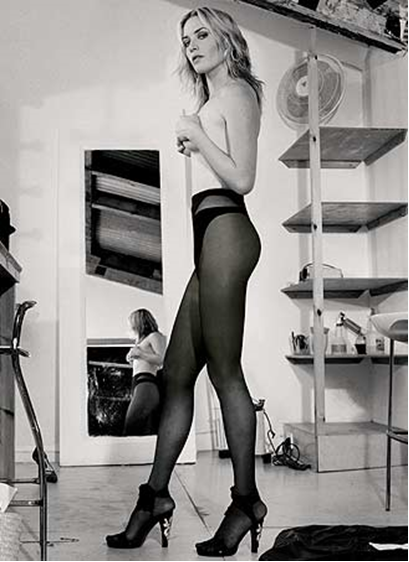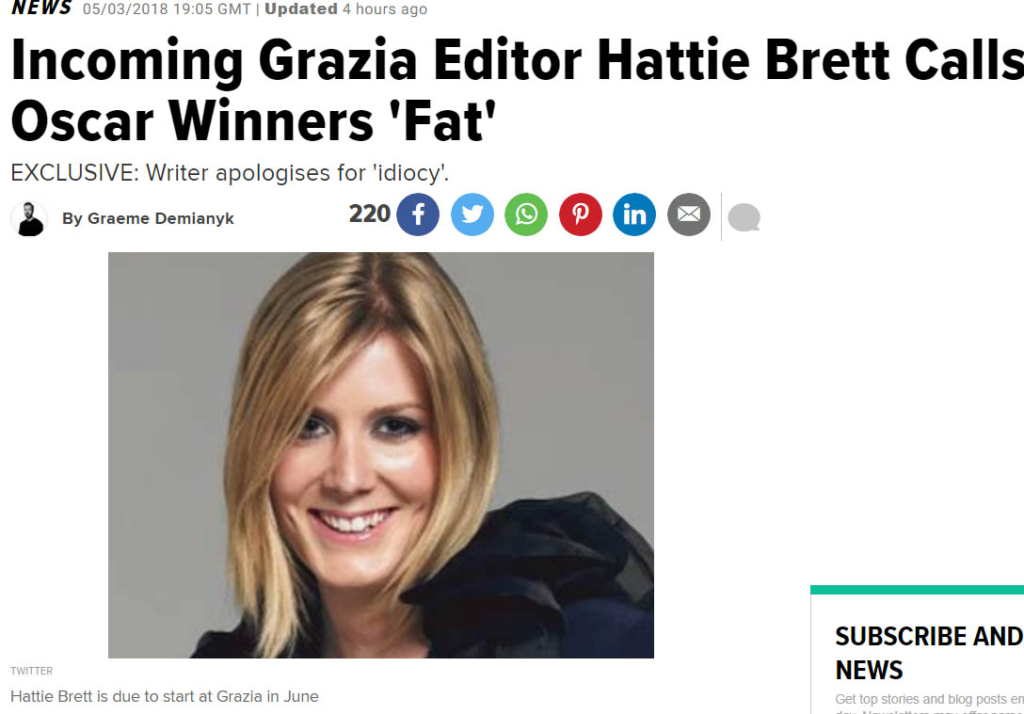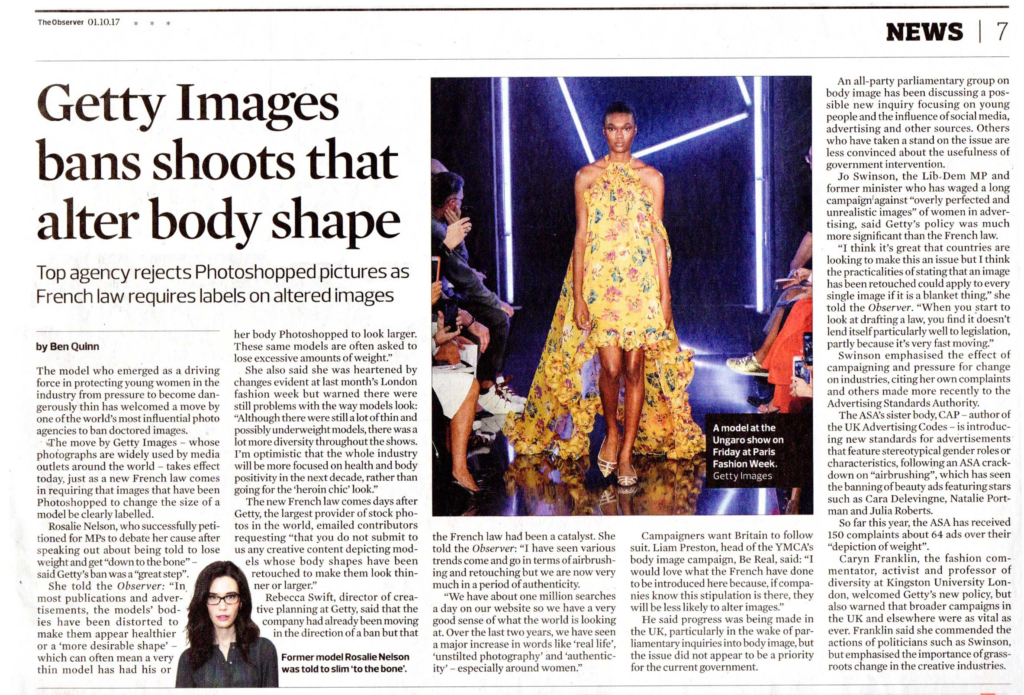Do Secrets Really Lie In Every Photograph?
Can a single phenomenon link inaccurate I.D. photos to
map making, camera phobia and the dangerous “size zero”
slimming of celebrities?
This Q&A section invites media professionals to examine common beliefs and working methods. The examples quoted offer seemingly inexplicable anomalies that can sometimes appear in daily professional practice. They pose intriguing questions about the underlying phenomena, and are followed by a research section that reveals some very surprising answers.
To some , the implications of this research are very controversial.
To find out where you fit into the spectrum of theory, practice and opinion, the following questions invite you to take sides: If answer A closely approximates your own beliefs, score yourself with one point. If you think B is in any way better, score it with two points.
Q1: If You Had To Make A Choice, Select The Option Closest To Describing Your Photographic Preferences
Option A : I trust the camera to faithfully record an image. My only obligation is to capture the decisive moment of perfect composition using the minimum of interventions.
Option B: Photography rarely captures a scene the way I (or others present at the time) actually saw it. My job is to understand all its many limitations and work within them to create naturalistic and compelling imagery using the best available techniques.
Q2: Is altering body shape in PhotoShop always wrong?
Option A: Yes. Image manipulation like this is almost always wrong.
Option B: No. Retouching to remove innate distortions or blemishes is ethical.
Q3: Does Dave’s Story Make Sense To You?
When Detective Constable Dave Thompson grabbed hold of a fleeing burglar, he literally had the city’s most prolific criminal in his grasp. Dave made eye contact with him for a split second, but a twist wrenched him free and he was gone. However Dave instantly recognised him because he had arrested him as a teenager. A quick scan through the mugshots would reveal his name and his crime spree would be over.
But no matter how many times he searched, the face did not appear. He knew it must be there, but his mind’s eye did not match any of them. Even taking the age difference into account, the lack of a positive I.D. was deeply troubling. But a few weeks later his luck changed when the burglar literally bumped into Dave while shopping. They recognised each other instantly, and the man was soon charged with dozens of offences. Out of curiosity Dave searched through the I.D. photos again, this time using only his name. And his face had indeed been there all along. How could this possibly happen?
Option A: Dave was most likely at fault. Police mugshots are trusted records of faces.
Option B: Mugshots are small 2D arrest-day snap-shots. Atypical facial expressions, hairstyle, skin tone, stubble, poor lighting, unnatural colour bias and accurate face /neck size can all be misrecorded by the camera and interfere with facial recall.
Q4: Does Hazel’s Story Ring True?
When Hazel Bream sees an unflattering photo of herself, she is often reminded of the formal pictures taken at her graduation ball with her four closest friends. Her three girlfriends were happy to be photographed because they all looked elegant and attractive. For their friend James however, it was very different. He had been diagnosed with leukaemia 18 months before, so they were thrilled when he said he was in remission and would love to come to their graduation. But James knew his immaculate tuxedo could not disguise how dreadfully thin and unwell he looked. Hazel’s group photo however told a different story. “We were staggered. James had never looked so handsome. He looked like 007 surrounded by four fat Bond girls.” Tragically, he was so ill he did not live long enough to see the photographs. How could James look so photogenic and healthy when everyone could see he had only weeks to live? And why did his female friends all look overweight?
Option A: Hazel and her friends were wrong. They were actually slightly overweight.
Option B: The camera can add over 10 lbs. (4.5 Kilos). to apparent bodyweight and can make even distressingly underweight people appear normal, healthy and attractive.
Q5: This Is The Infamous Photograph Of Kate Winslet That Was Widely Criticised for being “Excessively Slimmed” By The GQ Editor.

Option A: “This is PhotoShop at its most annoying and manipulative.”
Option B: “The Editor decided the unretouched above image did not accurately represent Kate’s true size. So he ordered it to be slimmed to match the shape of the person he met on the day.”
Q6: Do Magazine Editors Know Enough About Body Size Estimation In Photography?

Option A: Yes. Editors appointed to major fashion magazines are well-placed to judge actual body size.
Option B: No. Even experienced editors can grossly misperceive the actual body size of people they have never met when looking only at their pictures.
Q7: Do Women And Men Perceive Photography In Different Ways?
True or False: “When a questionnaire asked if photography was a reliable method of recording the appearance of people and general scenes, women were almost nine times more likely to doubt the reliability and accuracy of photography than were the male respondents.”
Option A: False. Photography is universal language and not interpreted differently by gender.
Option B: True. Women are known to interpret images differently to men and often expect vernacular photography to be unflattering and fattening in many circumstances.
Q8: What does this picture tell us about Melissa McCarthy?

Option A: It was taken during a time in her career when she was significantly overweight.
Option B: It was taken when she had lost significant amounts of weight.
Q9: What does this picture tell us about Melissa McCarthy?

Option A: It was taken during a time in her career when she was significantly overweight.
Option B: It was taken when she had lost significant amounts of weight.
Your Scores (And What They Might Mean)
If you answered mostly A and only scored 9-11 points, you may be very sceptical of some of the explanations below and experiments in the next two sections, and their implications for professional practice.
If you scored 11-15 points, you may be open to new knowledge about perception and photography.
If you preferred B more and scored 15-18 points, you are probably very aware of the limitations of conventional photography, already use your own interventions to correct for them and are keen to know more about the counter-intuitive ways we really perceive photographic imagery. The following explains why you were right to be wary.
Background Research and Summary:
Remarkably, the Q8 and Q9 photographs of Melissa McCarthy were taken only a few minutes apart at the 2016 Golden Globes. She had recently lost weight, and the reason she appears to look heavier in Q8 and slimmer in Q9 are discussed in detail in the experiments section. But they can be summarised as: Telephoto lenses (Q8 pic) are the normal lens used in professional stills and video. But they have a very strong flattening and fattening effect because they operate at distance, flattening and fattening the face by z-axis compression and unnatural enlargement. The perspective captured by telephoto lenses distorts faces, making necks look thicker, eyes smaller, craniums measurably larger (compared to a standard lens) and ears stick-out more than they do with direct vision. A standard lens gives only a slight fattening effect because it lacks the stereoscopic depth that normally allows accurate size estimations (with two eyes and direct life-size vision). Wide-angle lenses (Q9 pic) have a slimming effect, but only with arms-length proximity. They make eyes look larger, necks look much slimmer, ears return to a more natural alignment and gives faces more youthful proportions that are more representative of their true size and shape.
Q7 The questionnaire given to all participants in Experiment 6 of the PhD research asked if they thought photography was a reliable and trustworthy method of record. If you were female, you were 9 times more likely to mistrust photography than male respondents. This finding in itself shows that the gender bias in 2D photography is pervasive, making many women mistrust a medium that most males believe to be highly trustworthy.
Q6 Despite the announcement, Hattie Brett was not appointed as editor of Grazia Magazine. This may well be because she is one of those few females who (like most males) believe photography is truthful. Yet her opinions were considered to be both inaccurate and offensive. What is clear is that she was less well informed than she should have been. But given the fact there is no technical guidance editors can call on to disabuse them of such notions, it is highly likely that extreme errors like this have happened since and will happen again.
Q5. The GQ cover of Kate Winslet is unique in that the background mirror image gives clues to the major modifications of the foreground image. However, if the unretouched version conveys an inaccurate portrait of a person’s age, attractiveness and slimness, modifying it to be more truthful is completely ethical. The problem with this type of “PhotoShop” intervention is calibration. So this B.I.D. research may be helpful in establishing ethical benchmarks and improved photographic methodologies. Media professionals must address this question: “At what point does an airbrushed intervention become unnatural and indefensibly manipulated to the point of photographic fraud?”
Q4 Hazel’s and James’s story is far from unique. Three internationally known models have died from anorexia and their cases led to a review of the health of models in the fashion industry. Ana Carolina Reston weighed just 88 pounds when she died, while model sisters Eliana and Luisel Ramos had body weights typical of an 8 year old child. All three had been well below their ideal body mass index throughout their careers. And disturbingly, only weeks before they died all three had been photographed professionally and there was no evidence of their illness in any of the images. The shocking truth is this: By the time the camera could portray the devastating effects of malnutrition on these famous bodies (that was clearly visible to their friends and families), it was too late to do anything about it. Transitioning to a bodyweight that looks good in photographs is a journey from which some victims will never return.
Q3 Dave Thompson’s cat burglar had expected to be arrested at his home that day, but it only happened by accident many weeks later. During that time he promised himself that his next prison sentence would be his last. After serving his sentence, he eventually became a friend of Dave and a licensed crime prevention expert. But inaccurate photography meant it was only luck that he was caught, and he may never have given up his life of crime.
Q2 The only logical conclusion to be drawn from the GQ article is BID research completely contradicts the new retouching laws in France. BID research strongly supports editing and ethical interventions: So all 2D portraits should be modified to counteract any of the fattening and unflattering effects found in conventional 2D photography.
The assumption that a photograph is a wholly reliable method of record (of precisely what those present would have seen) can no longer by sustained by any legal and perceptual argument, or be fully corrected on camera by standard professional practices.
In the Kate Winslet photographs, the re-touching artist appears to have excessively slimmed the image in a crude and clearly visible way. Yet if the slimming had been more natural, it is quite possible the actress might have not been aware that any intervention had taken place and considered the image to be a fully accurate representation of how she appeared at the time. There is a strong case to be made here for the original photographer to take responsibility for all retouching and to ensure that the image meets the required ethical standard in addition to the technical and artistic standards they have traditionally been responsible for.
For picture editors and journalists, the converse is also true: Unless you know that an image has been corrected for distortions, fattening effects or minor blemishes, you should assume that it is not representative of a person’s normal body image. And if the image appears to show a thin model or a starving family in a refugee camp, be aware that by the time the effects of starvation are visible in any photograph, the subject will be dangerously thin or terminally underweight.
Q1 Trusting the camera to be an unbiased and accurate method of record is wrong. The moment the real 3D world is captured and compressed into a miniature 2D image it will become compromised by many deficiencies: Every 2D image has an immediate loss of true shape and distance information while also losing vast amounts of tonal range, colour information and contextual/spatial details. Relying on it to be an accurate gender-neutral representation of reality is flawed from the outset.
DaVinci knew this to be true. Even mapmakers have known for centuries that flattening the globe can make Africa look the same size as Greenland, though in reality is 14 times larger. Yet even experienced photographers rarely expect shape and size reproduction to be significantly affected by an often gender-biased transition from 3D to 2D. The few that do understand these issues “expect the unexpected” and manage the side-effects of 2D photography as an inevitable outcome of the innate flaws in 2D imaging.
The research detailed here will allow all photographers to reliably predict when these distortions will happen and help them to make more corrections in camera. This will put less of the burden of truthfulness on post production manipulations and more with the photographer (where it rightfully belongs). IT ALSO RAISES QUESTIONS ABOUT CAMERA DESIGN THAT HAVE NOT BEEN ADDRESSED BY ANY MANUFACTURER TO DATE.
For more information, please contact bernieharper@gmail.com
< Introduction – The Research:Background Next >
Views: 578

